The True Stories Project
Section Three: EXPLOITATION
Sexual exploitation is the abuse of children and youth through the exchange of sexual acts in exchange for money, drugs, food, shelter, protection, or other basics of life. It can also include involving children in creating pornography. It goes by other names such as sex trafficking, sex slavery and prostitution.
Sexual exploitation can be a transnational process where victims are recruited and transported across borders to another country. However, it can also be a domestic phenomenon, where little or no transportation is required.
There are more than 21 million people — up to half of them minors — throughout the world who are victims of human trafficking at any given moment. This estimated US$150 billion global industry is the fastest growing crime enterprise in the world according to the International Labor Organization.
Natural disasters, sex and gender discrimination, poverty, lack of public awareness and limited educational and economic opportunities contribute to exploitation along with increased vulnerability and cultural norms that discriminate against certain populations.
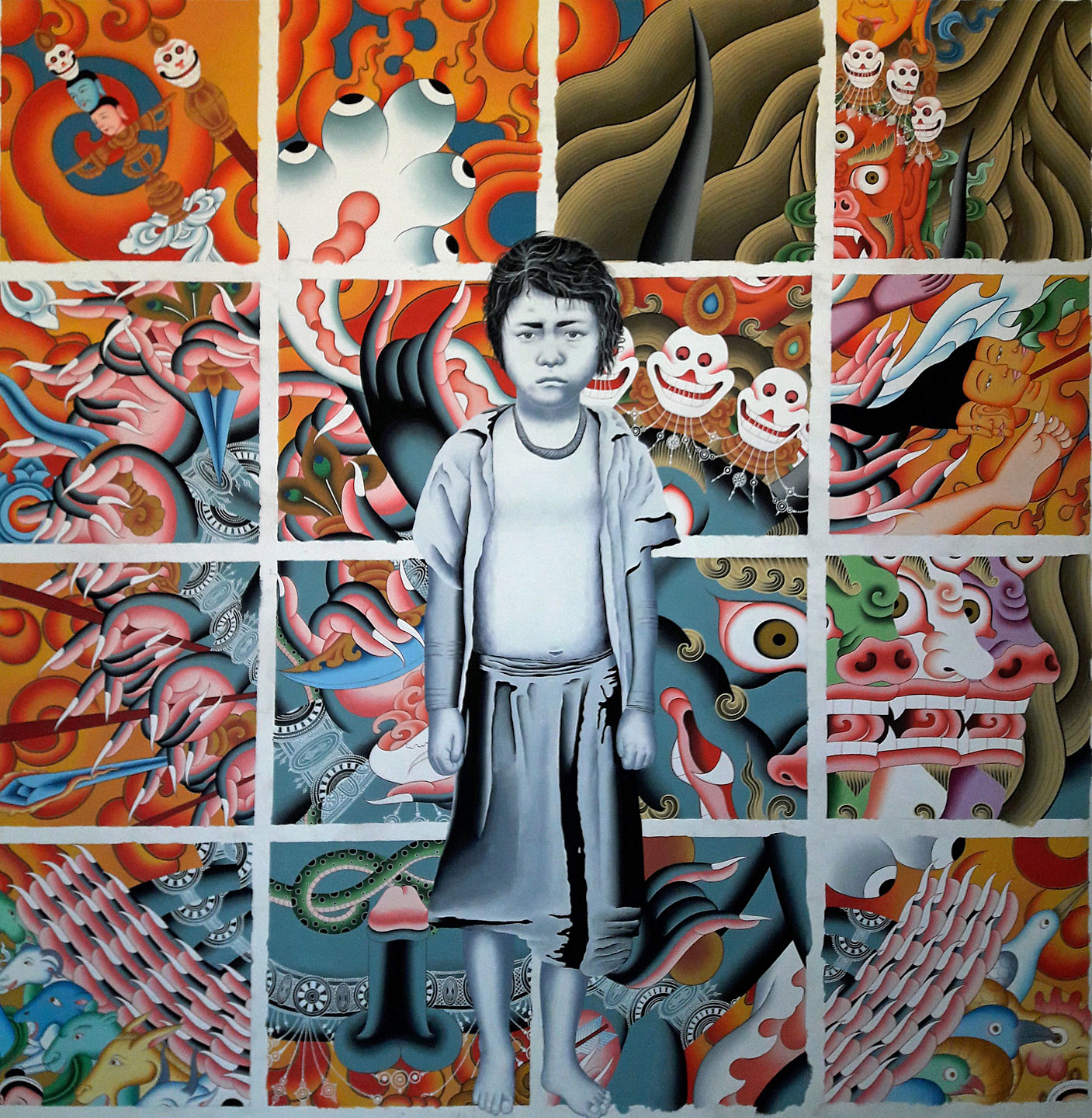
Untitled
Ang Tsherin Sherpa, 2017, gouache and acrylic on canvas. 5 x 5 feet © 2017, courtesy of the artist
California-based Sherpa is known for paintings that transform traditional images by merging them with contemporary elements. Layered in meaning within the Tibetan thangka-like painting, a young boy is surrounded by not a soothing meditative mandala, but a chaotically swirling and devouring mandala, Here, Sherpa explores the notion that sexual exploitation is not limited to young girls. Young boys, too, are at risk.
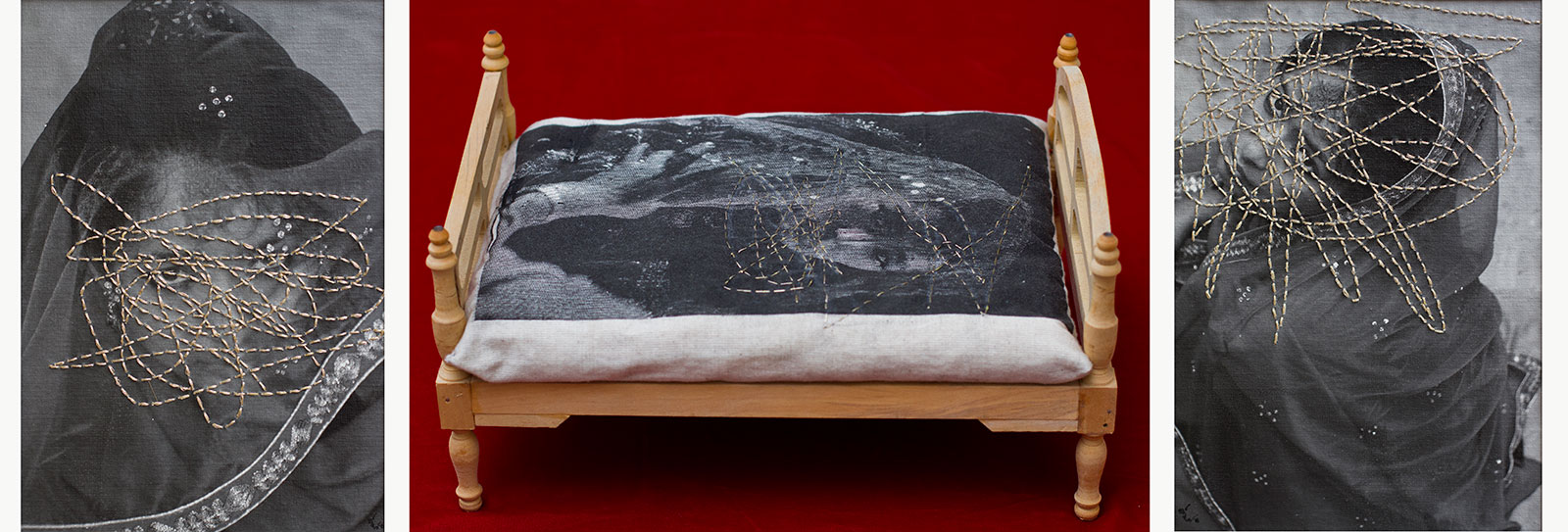
Agony of the New Bed
Sheelasha Rajbhandari, 2016, golden embroidery thread on digital printed canvas, wooden frame © 2016, courtesy of the artist
Rajbhandari ‘s mixed media installations explore the parallel – yet, often contradictory – existence of traditional beliefs and historic ideas with contemporary events and evolving lifestyles. The portraits belong to young girls who are victims of child marriage. Their identities are hidden under the scribbled embroidered golden lines.
In Nepal, more than forty percent of girls are married off before the age of eighteen. Parents often rush to get their daughters married in an attempt to protect them from possible sexual activities or, as is sometimes the case, sexual predators.
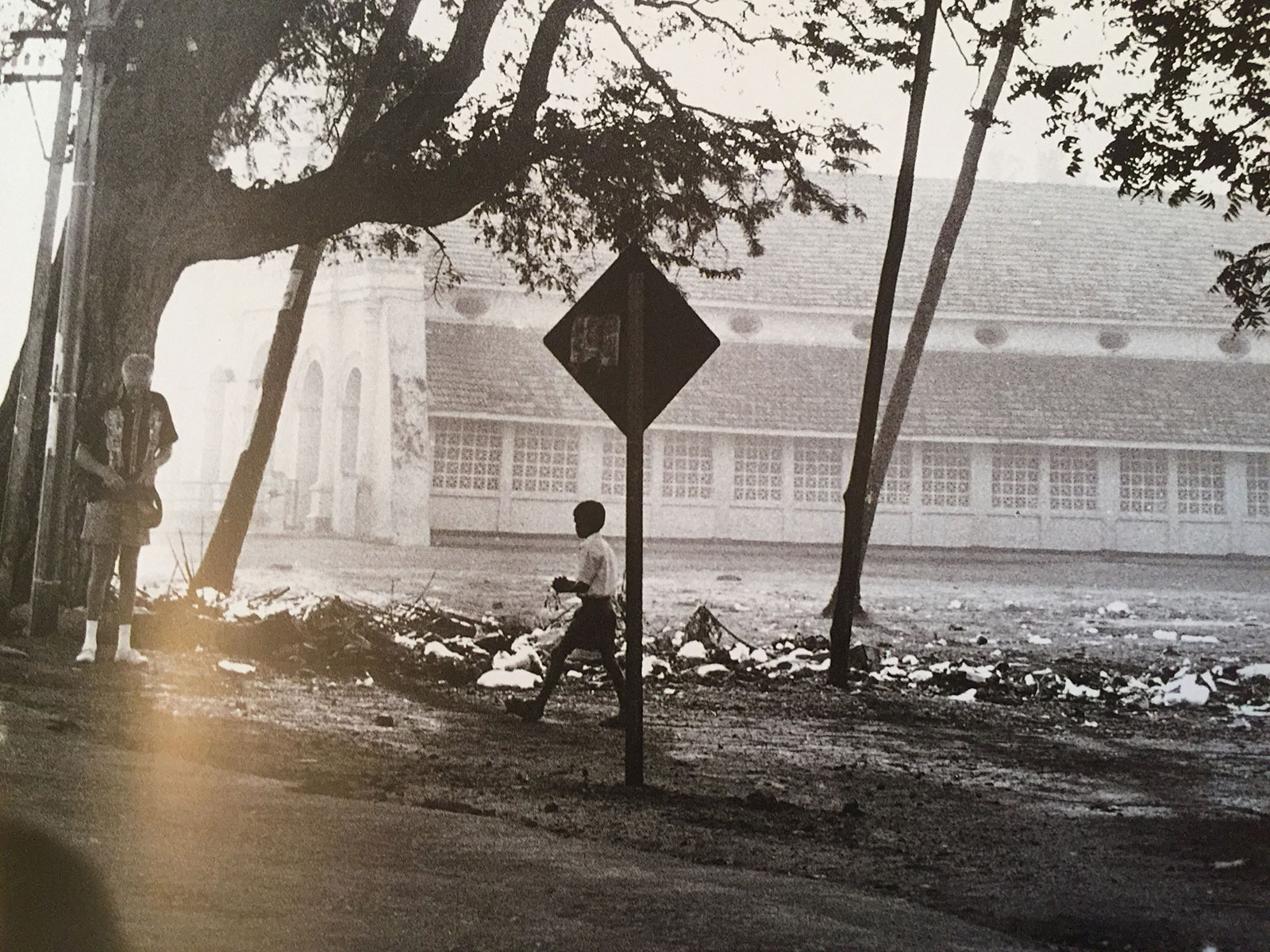
Negombo, Sri Lanka
Thomas L. Kelly, photography, 24 x 30 inches © Thomas L. Kelly, courtesy of the artist
Kelly is an internationally recognized photographer who has lived in Kathmandu for nearly 30 years. He documents the struggles of marginalized peoples and cultures worldwide. Kelly is the author of the book, Fallen Angels: The Sex Workers of South Asia, where these photos can be found.
In this image, a European man waits in a schoolyard to meet a child sex worker. The meeting was arranged by the boy’s pimp.
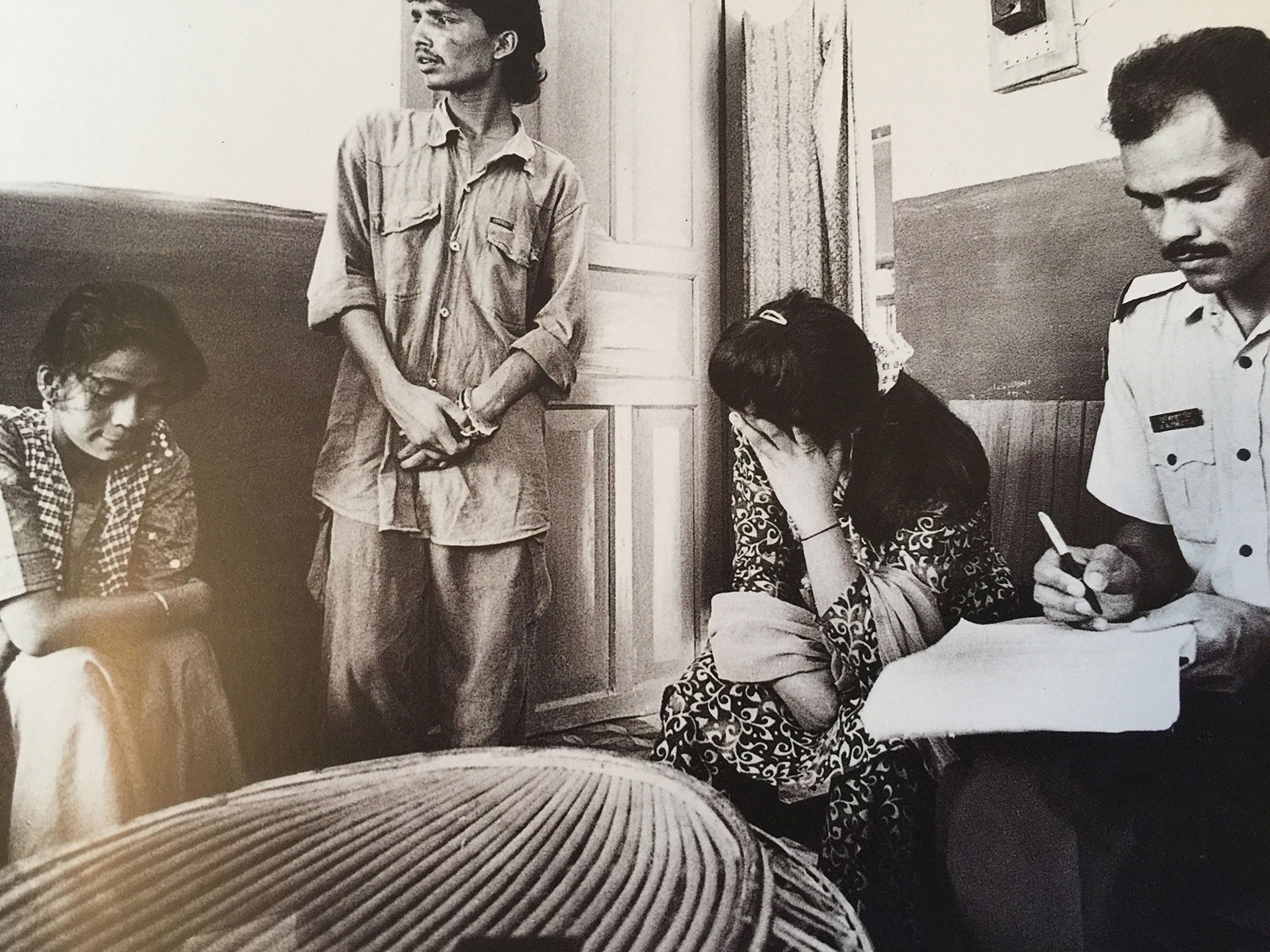
Hanuman Dhoka Jail, Kathmandu, Nepal
Thomas L. Kelly, photography, 24 x 30 inches © Thomas L. Kelly, courtesy of the artist
In this photograph, alleged trafficker Rajan (center) is booked on evidence from Jamuna and Jyoti, sisters who spent years in the brothels of Mumbai before being rescued. Hanuan Dhoka Jail, Kathmandu, Nepal.
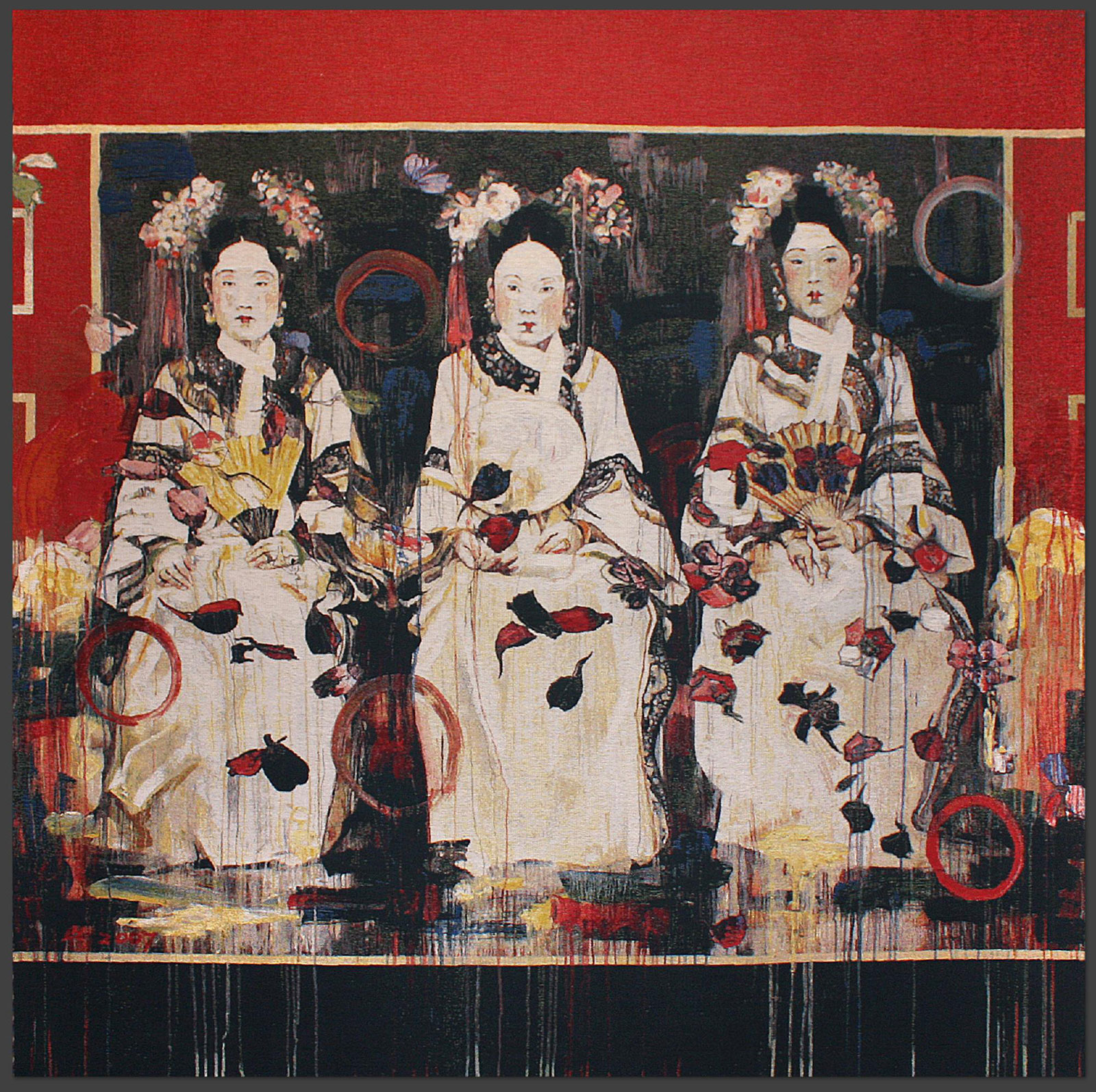
Three Fujin of a Prince
Hung Liu, 2008, jacquard tapestry, 78 x 79 inches, edition of 8 © 2008, courtesy of the artist
Liu, a Chinese-American artist, addresses the issues of identity, marginality, feminism, sexism, and racism in her art. As a young woman, Liu was forced to work in the rice fields as part of Mao’s Cultural Revolution re-education effort. At that time, she started secretly photographing and drawing the farmers and their families—a source of inspiration for her art along with collecting photographic images of life prior to the Revolution.
Three Fujins, the Emperor’s concubines, sit mask-like, in their role as both slaves, and the irony of pampered royalty. She includes three birdcages in the painting to punctuate her point.
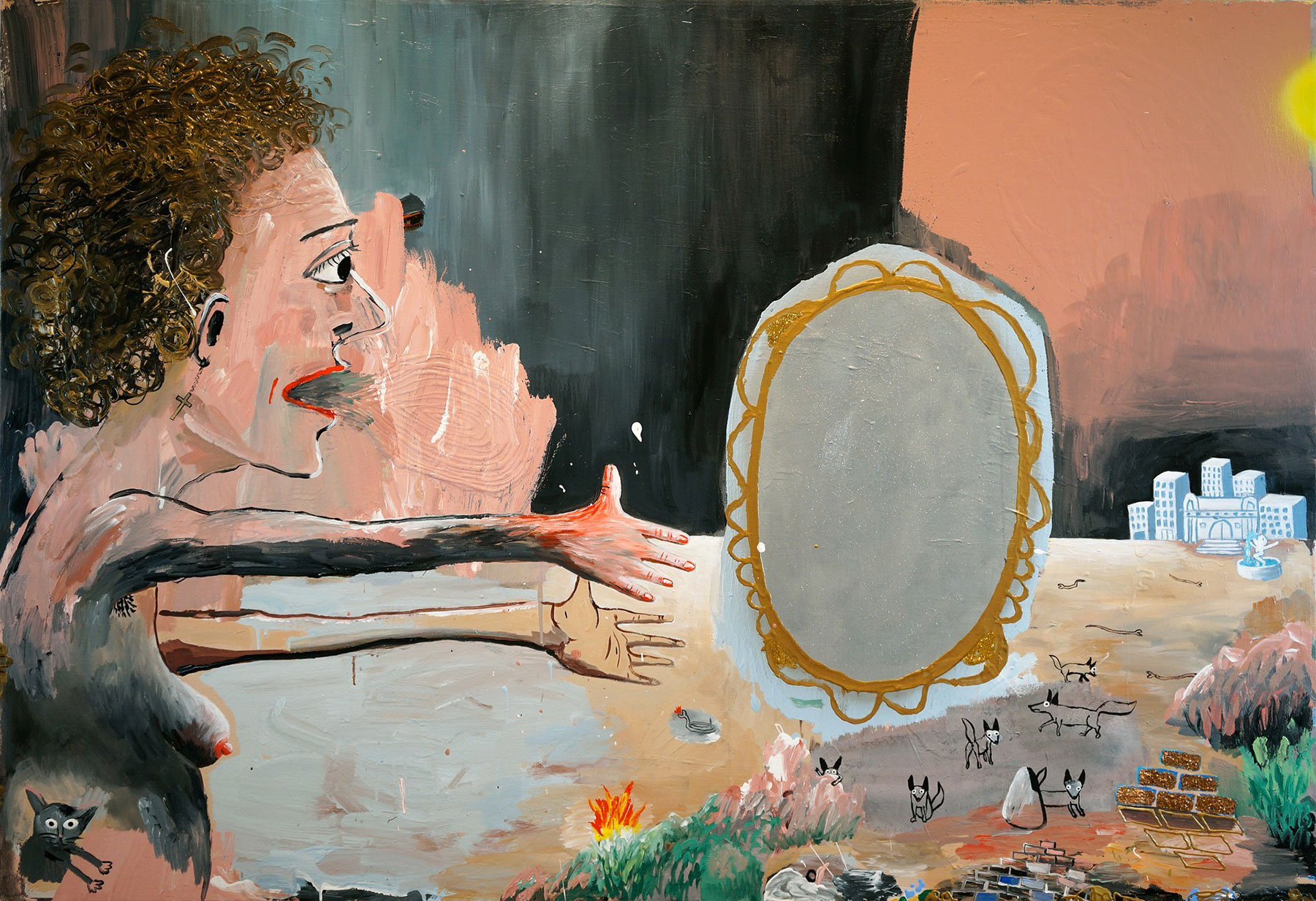
Cate White
Feral City, 2016, acrylic, spray paint, latex, glitter, puff paint, mica on canvas, 64 x 44 inches © 2016, courtesy of the artist
Cate White remains at home on a societal fringe. Much of her work is informed by her life on these margins–both in subject matter and philosophical perspective. White seeks to shake up our “status quo” and infect us with new perspectives in seeing.
An exposed and vulnerably naked woman stands with outstretched arms reaching for a mirror. Yet there is no image in the mirrored reflection to provide an identity and validation, as a city of feral cats run wild and in the background.
Egosphere
Gabriela Morawetz, 2007, Video, 3:52 minutes © 2007, courtesy of the artist
Morawetz’s gender and identity-themed photo-based artworks utilize digital techniques to explore human relationships, individuality, and the relationship between the self and the world at large. Within the video, a vulnerable and exposed woman embarks on a personal journey of self-healing, ultimately building a safe and secure “nest.”
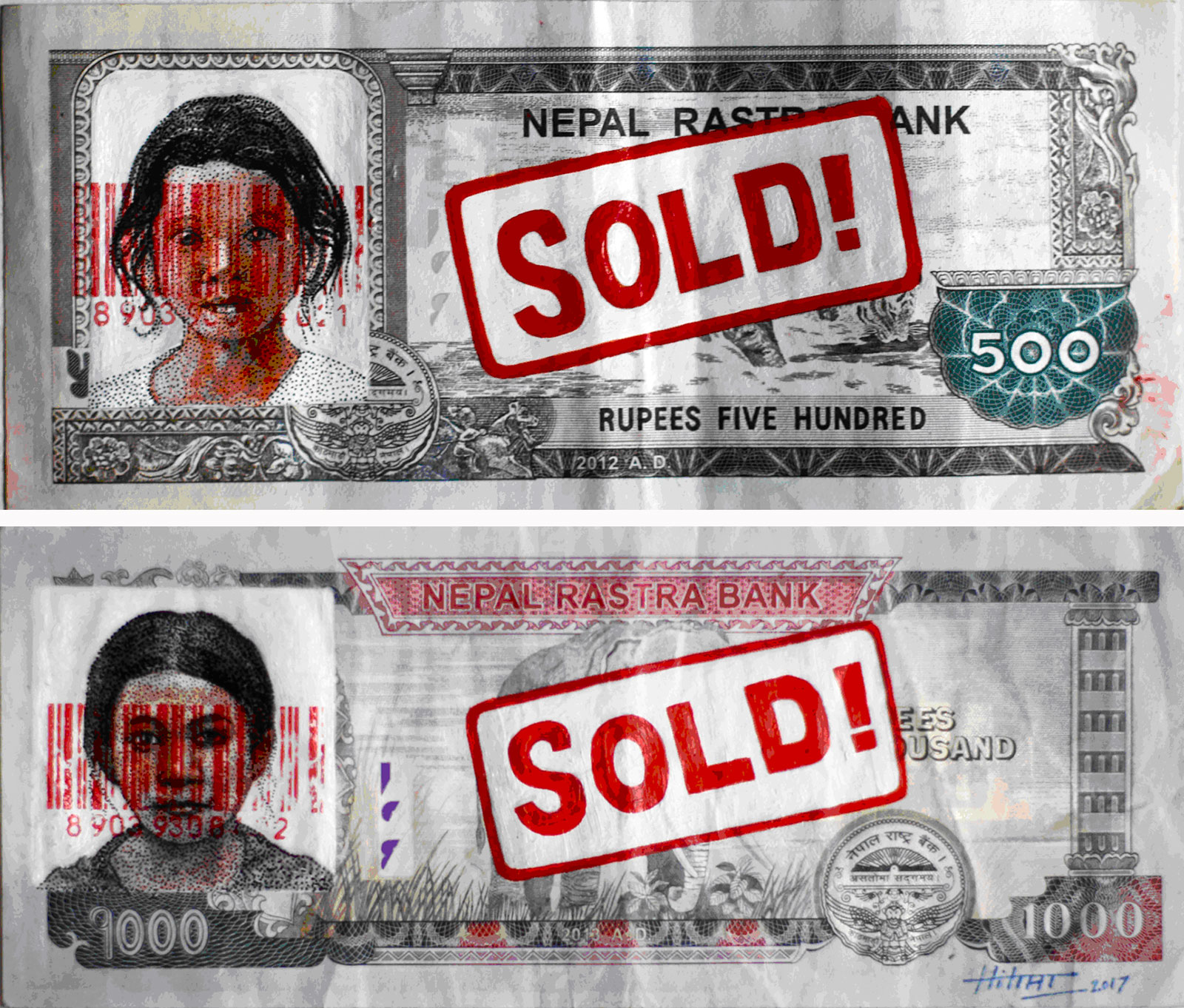
Sold, from The Red Bar Code series
Hit Man Gurung, 2017, currency of Nepal and India, acrylic and ink © 2017, courtesy of the artist
Gurung’s body of work is a direct response to some of the most pressing socio-political issues of the country. Most of Gurung’s artwork addresses mass migration and haphazard urban development, aspects that are consequences of the ten-year Maoist civil war and a reflection of an unstable Nepali government. Deeply concerned about the impact of these larger forces on individuals, communities and societies, Gurung infuses his paintings, documentary photo collage and installation work with political conviction and personal poetry.
The trafficked young women pictured on the Nepali Rupees are barcoded like a commodity and means of currency and exchange.
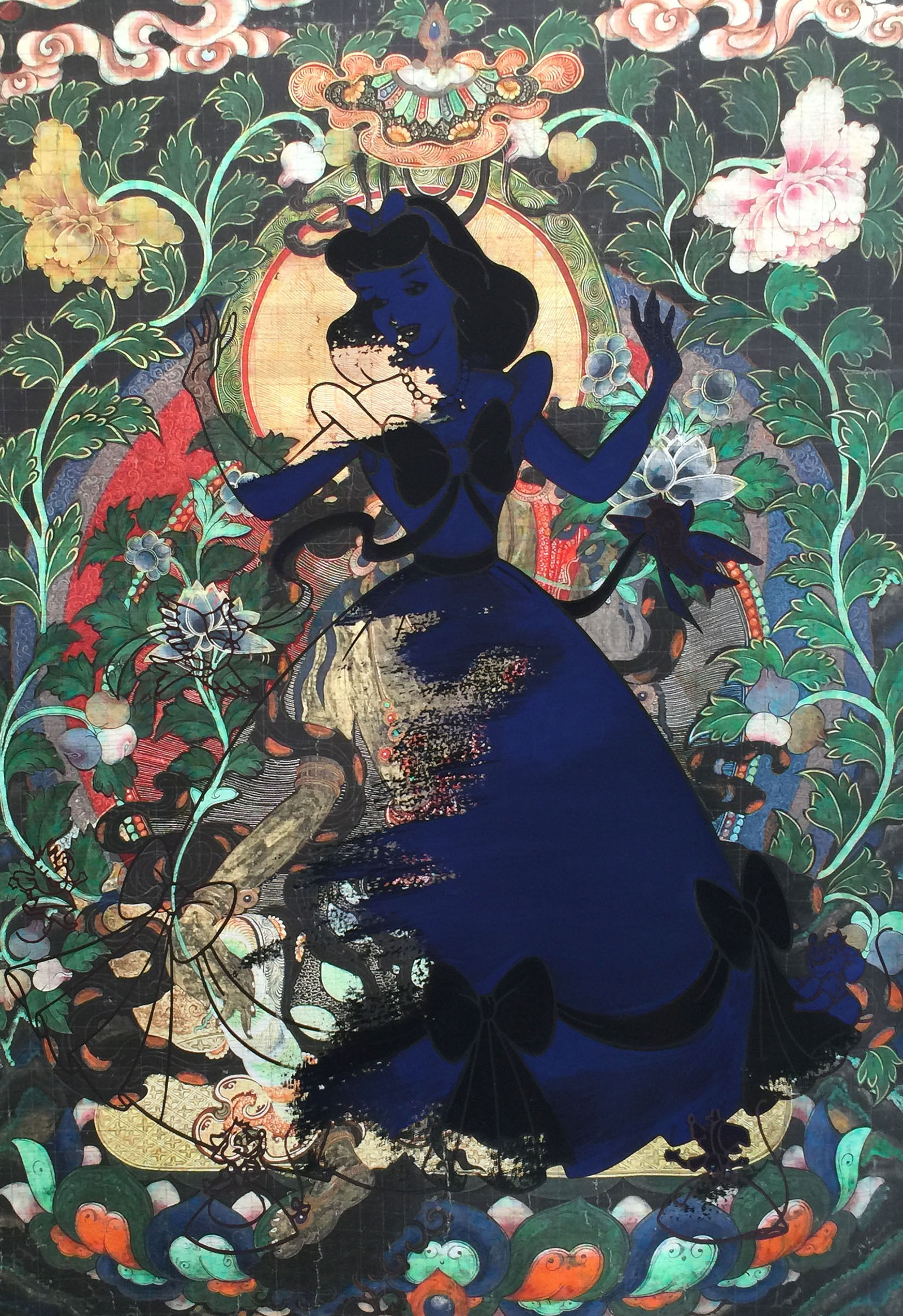
Shadow, Cinderella, Cultural Theme Park Series
Don and Era Farnsworth, 2015, inkjet print on paper, 75 x 51 inches © 2015, courtesy of the artists
Founders of the Oakland-based Magnolia Editions printing workshop, the Farnsworths transform appropriated paintings from across history and cultures with images from sources as varied as Tibetan mandalas and paintings of biblical themes. The artists alter the images to tell a new story. In the Shadow, Cinderella, the fairy tale of an exploited young girl, is culturally transported to a place of obliterating darkness.

